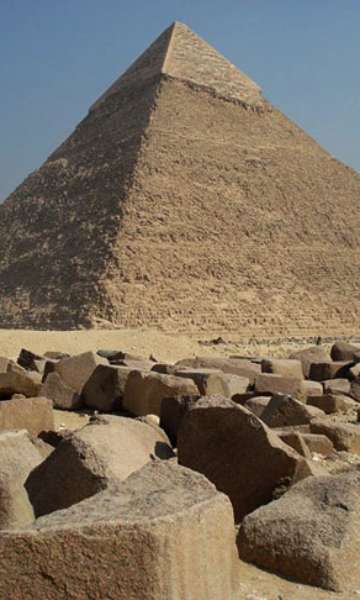Cut marks on the skull indicate an attempt by ancient Egyptian doctors to cure a man suffering from nasopharyngeal cancer.
Summary
Scientists have found two 4,000-year-old skulls from Egypt with small incisions, suggesting early cancer treatment.
Scientists have found a skull 4 thousand years Egypt with small incisions. These brands suggest a type of treatment against cancer, which would make them the first to try to cure the disease. The study that talks about this result was published in Frontiers in medicine this Wednesday (29th).
Edgard Camarós, a paleopathologist at the University of Santigado da Compostela, Spain, who participated in the study, told NewScientist that medicinal Egyptian in ancient times it was very advanced and therefore they were able to deal with various conditions, including trauma AND infections.
The research focused on two skulls from the collection of the Duckworth Laboratory, at the University of Cambridge. One of them was of a woman, who was about 50 years old, and lived in Egypt between 663 and 343 BC 2345 BC
The scientists observed that both skulls had large lesions, indicating the possible presence of cancerous tumors degrading the bone.

How were the Egyptian pyramids built?
Camarós told NewScientist that the woman was likely suffering from osteosarcoma, a type of bone cancer. Furthermore, the research also points out that he also had some healed wounds which appear to result from traumatic injuries, possibly caused by a sharp weapon in hand-to-hand combat.
Such evidence shows that the ancient Egyptians were skilled at treating traumatic or violent wounds.
As for the man, Camaros believes he had cancer nasopharyngealwhich originates in the tissues of the upper part of the throat. About 30 smaller lesions around the skull indicate that the cancer had spread.
“We were looking at the bones under the microscope and suddenly cut marks appeared in relation to these tumors,” Camarós said.
The small cuts around the lesions indicate that doctors at the time likely attempted to treat the cancer surgically. There is also the possibility that the exploratory operations were carried out after the individual’s death.
Camarós emphasizes that this discovery represents a milestone in the history of medicine, because although the man appears to have died of cancer, this is the oldest known evidence of an attempt to cure him.
“They didn’t have a word for cancer, but they had one for swelling and tumor,” Camarós tells the portal. “But the root of how we successfully treat cancer today is there, 4,000 years ago.”
Source: Terra
Rose James is a Gossipify movie and series reviewer known for her in-depth analysis and unique perspective on the latest releases. With a background in film studies, she provides engaging and informative reviews, and keeps readers up to date with industry trends and emerging talents.






